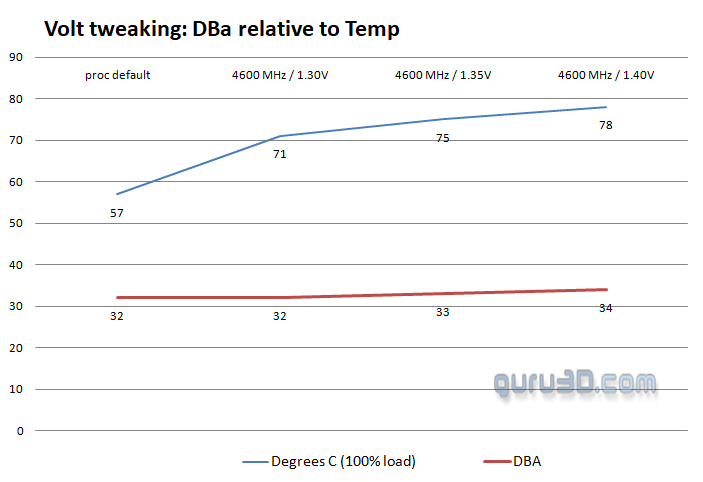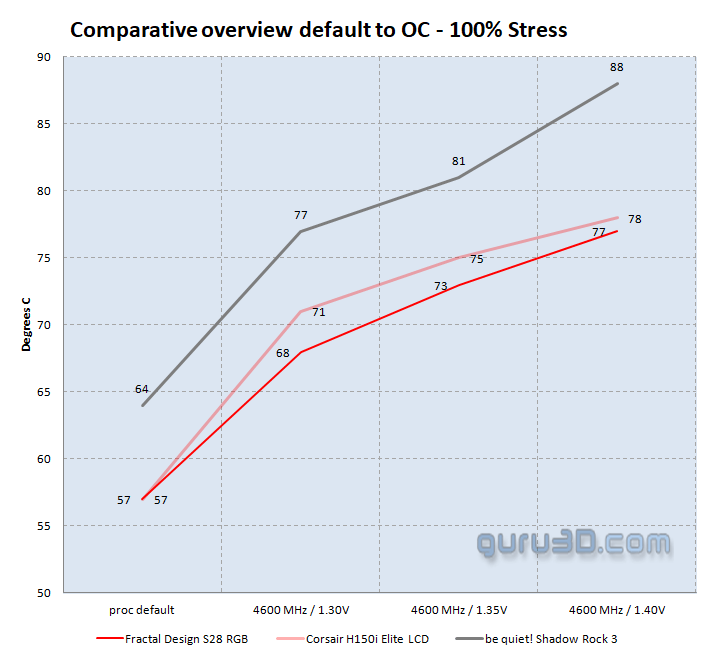Processor overclocking with Higher Voltage
Processor overclocking with Higher Voltage
Now it's time to boost and go full throttle. Please keep in mind that the voltage levels of 1.30V and higher are the ones at which Haswell processors have major problems as the result of the previously mentioned heat spreader in comparison to the TIM design solution from Intel. As an increased step, we tune the Core i7 processor to run at 4600 MHz across all cores and deliver 1.30 voltage to the CPU while filling it with 100 percent stress so that wPrime can execute on all available CPU threads three times. The IDLE data are shown first, followed by the total core load results.
Heatpipe-based coolers are notorious for generating temperatures that are well above and above 80-90 degrees Celsius, making them an unqualified no-go. As you can see, the temperatures are dangerously high for the majority of coolers. Coolers from the LCS class perform significantly better in this environment.
Our overclocking process is advancing in four steps, each of which increases the core voltage from 1.30v to a greater (unrealistic) 1.40v in order to determine our thermal threshold (the point at which we can no longer overclock). At 1.4 volts, any heat pipe cooler would fail, but with LCS, you can keep the temperature under or at the 80 degrees C mark for extended periods of time (which I can only advise for a short period of time).





